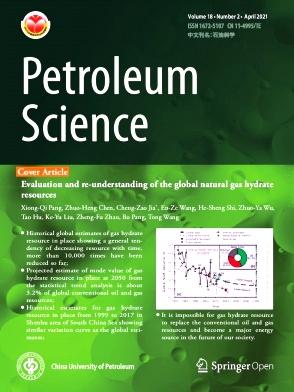Experimental study of reservoir damage of water-based fracturing fluids prepared by different polymers
IF 6
1区 工程技术
Q2 ENERGY & FUELS
引用次数: 0
Abstract
Fracturing operations can effectively improve the production of low-permeable reservoirs. The performance of fracturing fluids directly affects the fracturing efficiency and back flow capacity. As polymer-based fracturing fluids (such as guar gum (GG), polyacrylamide (HPAM), etc.) are high-viscosity fluids formed by viscosifiers and crosslinking agents, the degree of gel breakage after the fracturing operation directly influences the damage degree to the reservoir matrix and the mobility of oil angd gas produced from the reservoir into the wellbore. This study compared the viscosity, molecular weight, and particle size of the fracturing fluid after gel breakage prepared by GG and HPAM as viscosifiers, as well as evaluate their damage to the core. Results show that the viscosities of the gel-breaking fluid increased with the concentration of the viscosifier for both the HPAM-based and GG-based fracturing fluids. For the breaking fluid with the same viscosity, the molecular weight in the HPAM-based gel-breaking fluid was much larger than that in the GG-based system. Moreover, for the gel-breaking fluid with the same viscosity, the molecular particle size of the residual polymers in the HPAM-based system was smaller than that in the GG-based system. The damage to the core with the permeability of 1 × 10−3 μm2 caused by both the HPAM-based and GG-based gel-breaking fluids decreased with the increase in the solution viscosity. For the gel-breaking fluid systems with the same viscosity (i.e., 2–4 mPa s), the damage of HPAM-based fracturing fluid to low-permeability cores was greater than the GG-based fracturing fluid (45.6%–80.2%) since it had a smaller molecular particle size, ranging from 66.2% to 77.0%. This paper proposed that the damage caused by hydraulic fracturing in rock cores was related to the partilce size of residual polymers in gel-breaking solution, rather than its molecular weight. It was helpful for screening and optimizing viscosifiers used in hydraulic fracturing process.
不同聚合物制备的水基压裂液对储层损害的实验研究
压裂作业可以有效提高低渗透储层的产量。压裂液的性能直接影响压裂效率和回流能力。由于聚合物型压裂液(如瓜尔胶(GG)、聚丙烯酰胺(HPAM)等)是由增粘剂和交联剂形成的高粘度流体,压裂作业后凝胶的破碎程度直接影响对储层基质的破坏程度以及从储层产出的油气进入井筒的流动性。本研究比较了以 GG 和 HPAM 为增粘剂制备的压裂液破胶后的粘度、分子量和粒径,并评估了它们对岩心的损害程度。结果表明,无论是基于 HPAM 还是基于 GG 的压裂液,凝胶破裂液的粘度都随着增粘剂浓度的增加而增加。对于粘度相同的压裂液,HPAM 基凝胶压裂液的分子量远大于 GG 基体系。此外,在相同粘度的凝胶破裂液中,HPAM 基体系中残留聚合物的分子粒径小于 GG 基体系。随着溶液粘度的增加,HPAM 型和 GG 型凝胶破坏液对渗透率为 1 × 10-3 μm2 的岩心造成的破坏都有所减少。在粘度相同(即 2-4 mPa s)的凝胶破胶液体系中,由于 HPAM 型压裂液的分子粒径较小,其对低渗透率岩心的破坏程度(45.6%-80.2%)大于 GG 型压裂液(66.2%-77.0%)。本文提出,水力压裂对岩心的破坏与凝胶破裂溶液中残留聚合物的粒径有关,而不是与其分子量有关。这有助于筛选和优化水力压裂工艺中使用的增粘剂。
本文章由计算机程序翻译,如有差异,请以英文原文为准。
求助全文
约1分钟内获得全文
求助全文
来源期刊

Petroleum Science
地学-地球化学与地球物理
CiteScore
7.70
自引率
16.10%
发文量
311
审稿时长
63 days
期刊介绍:
Petroleum Science is the only English journal in China on petroleum science and technology that is intended for professionals engaged in petroleum science research and technical applications all over the world, as well as the managerial personnel of oil companies. It covers petroleum geology, petroleum geophysics, petroleum engineering, petrochemistry & chemical engineering, petroleum mechanics, and economic management. It aims to introduce the latest results in oil industry research in China, promote cooperation in petroleum science research between China and the rest of the world, and build a bridge for scientific communication between China and the world.
 求助内容:
求助内容: 应助结果提醒方式:
应助结果提醒方式:


